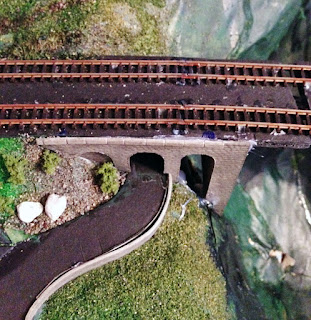These distinctive yellow busses are a common sight along a web of 862 obscure routes throughout the tiny country, and are a useful way to travel about to railfanning locations once the train has gotten you as close as it can.
Again there are many different suppliers of busses and slight differences in livery, but they all follow a similar colour style.
And just to make my job more difficult, instead of buying a 1:220 Z scale bus, I decided to get a 1:300 one (again from Mr Steffan's Z shop) to force some perspective into the scenes, as the bus will be sitting between (but away from) three sets of tracks on the layout. The model is a slightly older bus shape, but hopefully only the bus enthusiasts will notice...
So I painted the roof of the Shapeways core white, and then started to 'paint' in the black window layer using a Sharpie marker pen. This all went swimmingly (fortunately the prototypes have solid black area around the dark windows - rather than picking out the pillars between the windows in yellow for example).
 |
| First coat |
After a minute of bumbling around the possibilities, I hit upon the idea of painting a superfine Details Associates brass wire red, folding it as needed and supergluing it to the bus. Here you see it going on the side before being folded around the back and the other side.
 |
| Red stripe wire attached and sticking out the back before bending |
This actually turned out rather well - as long as you don't look to closely!
Blobs of paint in approximately the right colours and shapes were added to represent head and tail lights and numberplates.
For the PostBus logo on the sides, I applied a diagonal line of white and feathered it off after a few mm towards the back and painted a guesstimate of the PostAuto horn logo. Not completely terrible for a hand-painted logo on a 1:300 model. I started with a grey representation of the horn outline, then tried to do yellow inside that, but ended with a mess in the circular bit, so put a dab of white in the middle and and it looks quite convincing on this side - the other doesn't look as good, so the bus will be going towards Wassen, as had been planned. If the logo had been better on the far side, it would have ended up as an outbound bus service!
 |
| Baby PostBus |
In place on the road below, you can see the forced perspective look of the smaller scale bus. It will eventually be located on the bridge just to the left.

















































